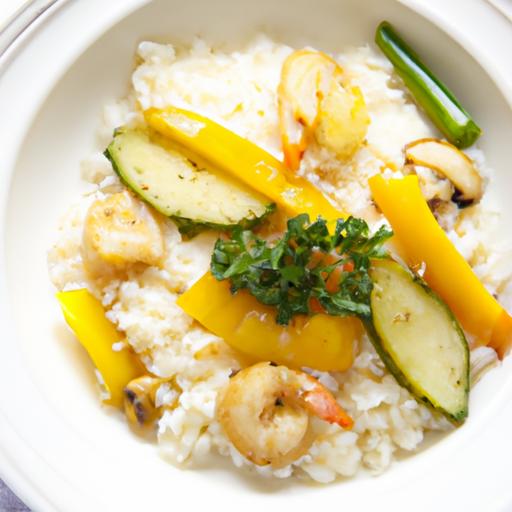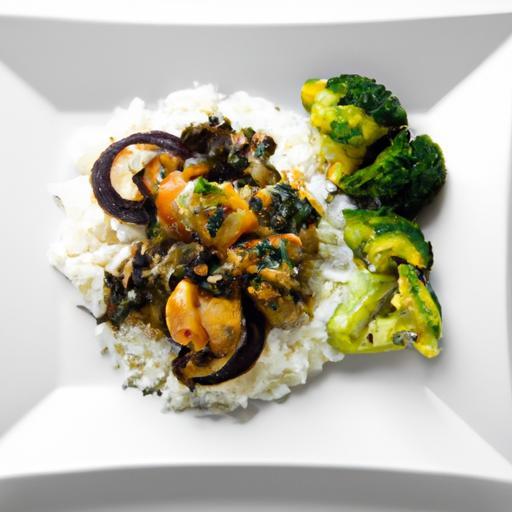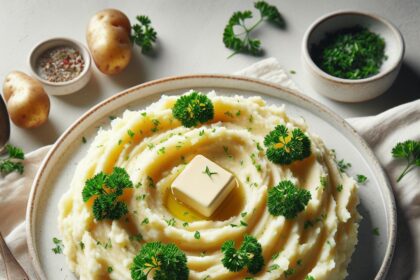There’s something quietly magical about a steaming bowl of freshly cooked rice-fluffy, fragrant, and comforting in every grain. Yet, when it comes to reheating leftovers, this humble staple often falls victim to the dreaded clump or unexpected sogginess. Welcome to the art and science of rice revival, where mastering the perfect reheating techniques transforms yesterday’s batch into today’s culinary delight. Whether you’re rescuing leftover rice from a busy weeknight or prepping meals ahead, this guide will unlock the secrets to restoring texture, flavor, and that just-cooked charm, proving that reheated rice can be just as irresistible as the first time around.
Rice Revival Secrets to Retain Flavor and Texture
Rice Revival: Mastering Perfect Reheating Techniques begins with a fundamental understanding of how rice behaves upon cooling and reheating. Whether it’s fluffy basmati from an Indian feast or sticky sushi rice from a casual meal, the magic lies in restoring its delicate texture and vibrant flavor without turning it into a dry, crumbly mess. As someone who’s revived countless dishes in my culinary journey, I’ve discovered that the right tools, combined with mindful reheating methods, transform leftover rice into an appetizing delight that tastes freshly made.
Prep and Cook Time
- Preparation Time: 2 minutes
- Reheating Time: 5-10 minutes (depending on technique)
Yield
Serves 2 to 3 as a side dish or base for your favorite meals.
Difficulty Level
Easy
Ingredients
- 2 cups of cooked rice, chilled (preferably stored in an airtight container)
- 2 tablespoons water or broth (for moisture)
- 1 teaspoon olive oil or unsalted butter (optional, for extra richness)
- Pinch of salt (optional, to enhance flavor)
- Fresh herbs or a squeeze of lime (optional, for garnishing)
Choosing the Right Tools for Flawless Reheating
Revive your rice to perfection with the right kitchen companions. A microwave-safe ceramic bowl with a vented lid or a damp paper towel topper ensures even steam circulation during microwave reheating. For stovetop revival, a non-stick skillet or saucepan with a fitted lid preserves moisture and prevents burning. Meanwhile, a bamboo or metal steamer basket suspended above simmering water offers the gentlest method for tender restoration, locking in flavor without drying.
Step by Step Guide to Microwave Rice Rejuvenation
- Place the chilled rice in a microwave-safe bowl, breaking up any clumps gently with a fork to increase surface area.
- Add 2 tablespoons of water or broth evenly over the rice to reintroduce moisture essential for fluffiness.
- Drizzle olive oil or butter if desired, which helps recreate a luscious mouthfeel and deeper taste.
- Cover the bowl with a microwave-safe lid or a damp paper towel to trap steam, preventing dryness.
- Heat on medium power for intervals of 1 minute, stirring gently between each, until rice is heated through and tender.
- Once warm, fluff the rice again with a fork to separate grains and release any residual steam.
Exploring Stovetop and Steamer Techniques for Ideal Results
Stovetop method: Spread the refrigerated rice thinly in a non-stick skillet. Add the moisture and oil, cover with a tight lid, and gently cook over low heat. Stir every 2-3 minutes, allowing the rice to absorb moisture evenly without sticking or burning. This method produces a slightly toasted, aromatic finish reminiscent of freshly cooked rice.
Steamer method: Set up a steaming pot with boiling water beneath a rinsed, lined steamer basket. Sprinkle a little water over the rice and cover. Steam for 5-7 minutes, checking halfway and fluffing gently. The indirect warmth renews moisture subtly, making it perfect for delicate varieties like jasmine or sushi rice.
Tips for Success
- Use day-old rice: It separates better and absorbs moisture without becoming mushy.
- Add flavor: Incorporate a splash of soy sauce, toasted sesame oil, or fresh herbs before reheating to amplify taste.
- Avoid overwatering: Excess liquid turns rice gummy; just enough to create steam is ideal.
- Store properly: Cool rice quickly and refrigerate within two hours of cooking in airtight containers to reduce bacterial growth and preserve texture.
- Microwave tip: Stir regularly-this breaks up cold clumps and distributes heat evenly.
Serving Suggestions
Serve reheated rice as a neutral but flavorful canvas for stir-fries, vibrant curries, or grilled kabobs. Garnish with freshly chopped cilantro, sliced scallions, toasted sesame seeds, or a drizzle of chili oil for a restaurant-worthy presentation. For a comforting meal, pair with creamy dal or sautéed vegetables, elevating simple leftovers into an inviting dish that sings with every bite.
| Nutritional Info (per serving) | Calories | Protein | Carbs | Fat |
|---|---|---|---|---|
| Reheated Rice | 220 kcal | 4 g | 45 g | 1.5 g |

For deeper insights on rice preparation and storage, explore our Ultimate Guide to Cooking Rice. To understand the science behind reheating rice safely, visit USDA Food Safety Guidelines.
Q&A
Q&A: Rice Revival – Mastering Perfect Reheating Techniques
Q1: Why does reheated rice often turn out dry or mushy?
A: Rice’s texture depends on how evenly moisture and heat are restored. When reheated poorly, the grains either lose moisture and dry out or absorb too much steam and turn mushy. It’s all about balancing gentle heat with adequate moisture to bring that fluffy texture back to life.
Q2: What’s the golden rule for reviving leftover rice?
A: Treat leftover rice like a delicate treasure-introduce moisture and heat slowly. Adding a splash of water or broth before reheating, coupled with covering it to trap steam, breathes new life into those grains.
Q3: Which reheating methods work best for rice?
A: The magic trio: microwave, stovetop, and oven.
- Microwave: Add a tablespoon or two of water per cup of rice, cover with a microwave-safe lid or damp paper towel, and heat in short bursts, fluffing occasionally.
- Stovetop: Place rice in a pan, sprinkle water, cover with a tight lid, and warm on low heat-think of it as coaxing the rice to steam gently.
- Oven: Spread rice in an oven-safe dish, sprinkle water, cover tightly with foil, and warm at 300°F (150°C) until heated through.
Q4: Can you revive refrigerated rice without drying it out?
A: Absolutely. The trick is to revive moisture without drowning the rice. Adding just enough water or a light broth and reheating with a cover ensures the grains rehydrate perfectly instead of drying like desert sands.
Q5: How can I make reheated rice taste as fresh as when it was first cooked?
A: Besides perfect reheating, a little seasoning boost helps-think a dash of soy sauce, a hint of butter, or a sprinkle of fresh herbs. This revives not just texture but flavor, making your rice sing again.
Q6: Is it safe to reheat rice more than once?
A: Best to avoid it. Rice can harbor bacteria if left at room temperature too long. Reheat only what you’ll eat immediately to keep your rice revival both delicious and safe.
Q7: Any creative tips for transforming reheated rice?
A: Turn your revived rice into fried rice! The slight dryness after reheating is perfect for stir-frying, adding veggies, eggs, and sauces to create a brand-new meal. It’s like a second debut for your rice.
Mastering rice reheating is less about magic and more about mindful moisture and heat. With these techniques, your leftovers won’t just be reheated-they’ll be reborn.
Final Thoughts
As the humble grain that has nourished countless generations, rice deserves more than just a careless zap in the microwave. Mastering the art of reheating transforms last night’s leftovers into a steaming bowl of comfort, unlocking flavors and textures that rival freshly cooked rice. With the simple techniques shared in this guide-whether it’s the gentle steam method, the skillet sizzle, or the soaking shortcut-you hold the power to revive rice with finesse and flair. So next time you reach for that cold container, remember: perfect reheating isn’t just a kitchen chore-it’s a delicious second act for one of the world’s most beloved staples. Embrace the revival, and let every grain shine anew.








